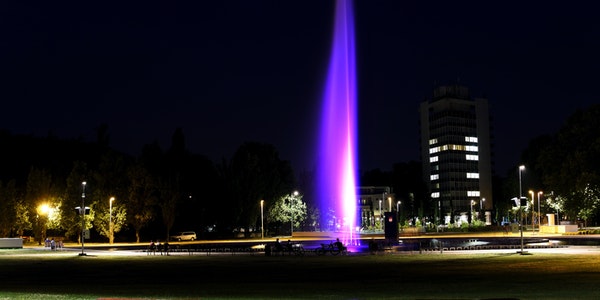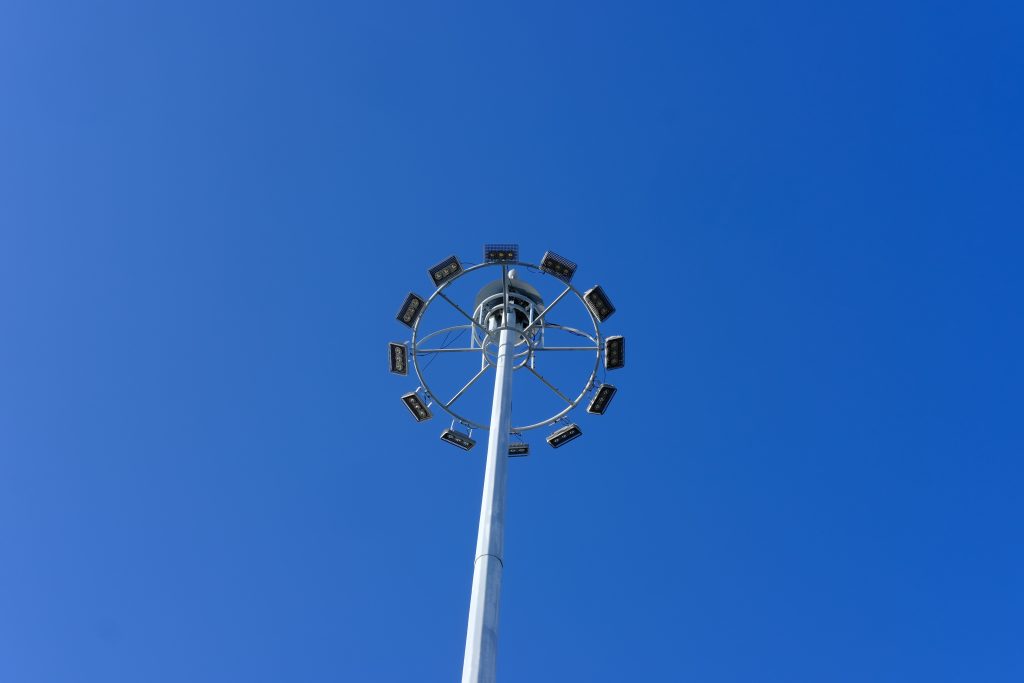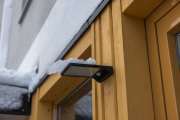Introduction to LED underwater lights
LED underwater light is a kind of LED light. It simply refers to the light that is installed under the water. The appearance is small and exquisite, beautiful and generous, and the appearance is similar to some underground lights, but it has an additional mounting chassis. The chassis is used Screw fixed. Because LED underwater lights are used underwater and need to withstand a certain pressure, they are generally made of stainless steel, 8-10MM tempered glass, high-quality waterproof joints, silicone rubber sealing ring, curved multi-angle refraction strengthened glass, waterproof, dustproof , Anti-leakage and corrosion resistance.
Instructions
- LED underwater light is a kind of underwater lighting fixture that uses LED as the light source and is composed of red, green and blue mixed colors. It is a perfect choice for fountains, theme parks, exhibitions, commercial and artistic lighting. In order to make the LED underwater light better dissipate heat, it is recommended to use the light below the water surface.
- In order to make the LED underwater light achieve a good waterproof effect, the protection effect of the LED underwater light should reach IP67 or more, and the light can be placed below 5 meters from the water surface. The best projection angle is 25. The controller is controlled to achieve synchronization effect and can be connected to the DMX console. Each unit has a separate address, and the red, green, and blue lights are composed of corresponding 3 DMX channels. There are two control modes: external control and internal control. The internal control does not require an external controller and can be built in a variety of change modes (up to six), while the external control needs to be equipped with an external control controller to achieve color changes. The applications on the market are also Mostly outside control.
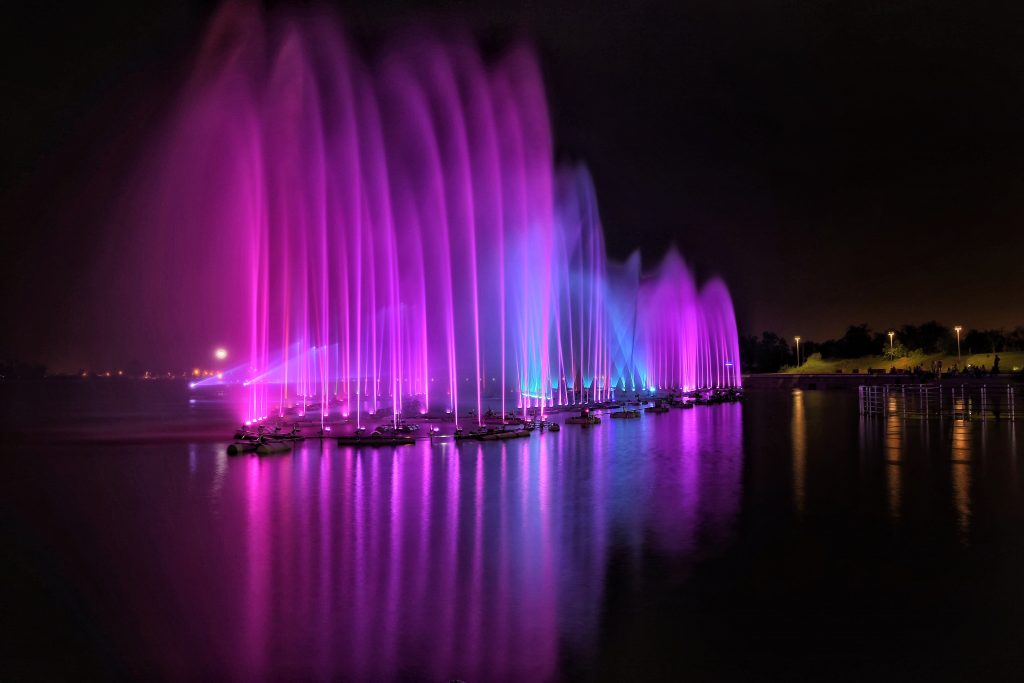
- The LED underwater light uses the best super bright LED as the light source, and the bulb can emit light for 100,000 hours. Each underwater light consists of 360 light sources (120 red light, 120 blue light, 120 green light). Good light source materials make the lamp life longer and obtain the most satisfactory lighting effect.
- The LED underwater light uses a five-core wire to connect to the control system. The entire system includes a DMX controller, a distribution box, and lamps and distributions that can be placed in the water. The whole lamp is perfectly combined.
- The LED underwater light has a movable fixing clip, which can adjust the angle and position of the light. The design of the entire lamp is perfect, effectively preventing the corrosion of bromine and chlorine.
Features
All imported 1W high-power LEDs are used as the light source, with significant advantages such as long life, low power consumption, pure color, and no pollution. Cooperate with DMX512 control system to achieve multiple color change effects. It can work underwater for a long time, and the protection level is up to IP68; it adopts low-voltage DC power supply, safe and reliable, high-quality stainless copper shell, beautiful and generous, safe and reliable. It has a strong ornamental. The material is generally stainless outer steel panel and aluminum lamp body, which has the advantages of strong corrosion resistance and strong impact resistance. And it has a good waterproof design, simple maintenance and easy installation. The specifications are generally Φ80-160mm, and the height is 90-190mm.
Light Source
Underwater lights are generally LED light sources. LEDs are called fourth-generation lighting sources or green light sources, which have the characteristics of energy saving, environmental protection, long life, and small size. When it is energized, it can emit a variety of colors, colorful, and is usually installed in a park or fountain.
Parameter configuration
Can display: always on. Colorful
Working voltage: 12V/24V (DC, AC)
Single lamp bead power: 1W
Housing Material: 304 stainless steel lamp body, tempered glass
Working temperature: -25℃~55℃
Color: red, yellow, blue, green, white, colorful, warm white
Control mode: constant light, colorful internal control, full-color external control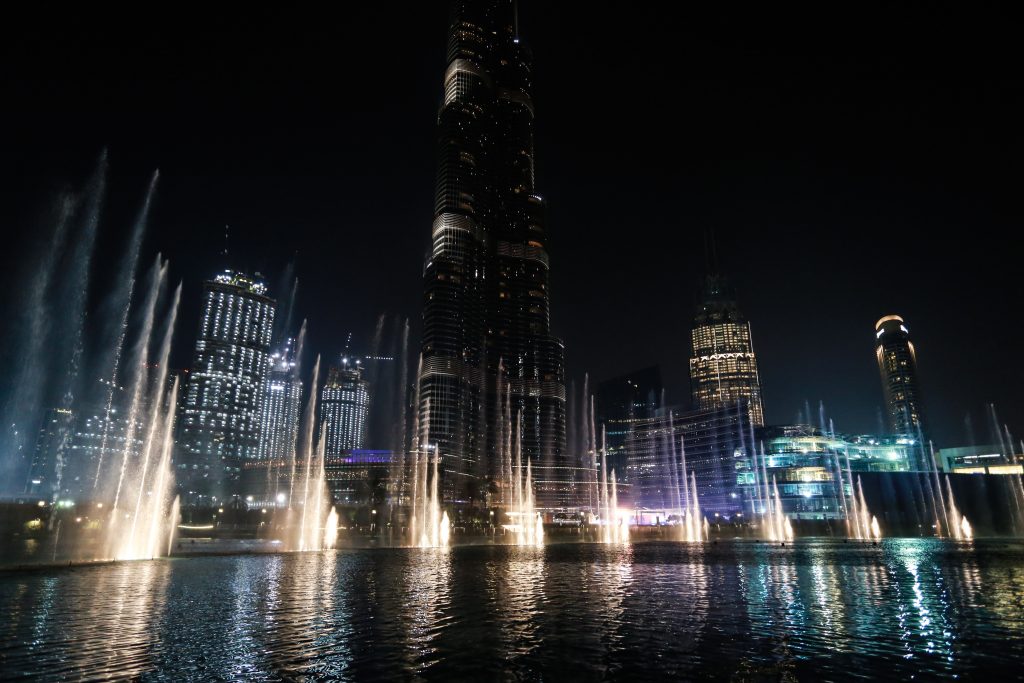
Precautions
LED underwater lights are underwater lights produced by using LED technology. Compared with traditional underwater lights, LED underwater lights are more energy-saving and environmentally friendly, and the lights are varied and more decorative, so they are widely used in various landscape lighting systems. However, as a manufacturer of LED lamps, some problems in the installation of LED underwater lamps need special attention.
- The LED underwater light should be powered by a DC constant current power supply. Under the control of constant current power supply, the forward voltage drop of LED wall washer, LED flood light, LED underwater lamp, and LED underground lamp will decrease as the temperature of the LED chip increases. It didn’t have much impact. However, if it is driven by a constant voltage, the current of the LED underwater lamp chip will increase as the temperature rises, and the LED underwater lamp may even be burnt in severe cases. Therefore, the LED underwater light should be powered by a DC constant current power supply.
- Anti-static measures must be taken. During the process of processing, production and installation of LED underwater lights, certain anti-static measures should be adopted, such as: the workbench should be grounded, workers should wear anti-static clothing, anti-static rings, and anti-static gloves, etc., can be installed if conditions permit For the anti-static ion fan, at the same time, ensure that the air humidity is about 65% during installation to prevent the air from being too dry to generate static electricity. In addition, the antistatic ability of LEDs of different quality grades is different, and the antistatic ability of high-quality LED underwater lights is stronger.
- Pay attention to the sealing of LED products. No matter what kind of LED lighting products, as long as they are used outdoors, they are faced with the problem of moisture-proof and sealing. This is especially true for LED underwater lights. Poor sealing problems will directly affect the service life of LED underwater lights.

Technical indicators of LED underwater lights
Technical indicators of underwater lights
Due to the particularity of the underwater color lamp application, it is an electrical product that works underwater, so it also has special requirements for its technical indicators.
- The protection index of underwater colorful lights
The protection index of underwater colored lights is divided into two aspects: dustproof and waterproof. The IEC standard stipulates that the internationally accepted protection marking symbols are as follows:
1), dustproof grade According to the national standard, the dustproof grade of lamps is divided into 6 grades. Among them, level 6 is the highest, and the dustproof level of underwater colored lights should reach level 6, and its marking symbol is: IP6X.
2), waterproof grade According to the national standard, the waterproof grade of lamps is divided into 8 levels. The 6th level is water splash type, the 7th level is watertight, and the 8th level is pressurized watertight. The eighth level is the highest, and the waterproof level of underwater colored lights should meet the requirements of level 8, and its marking symbol is IPX8. Based on the above two requirements, the underwater color lights have a dustproof level of 6, and a waterproof level of 8, and their marking symbol is IP68.
- Safety indicators against electric shock
The national standard has four categories of anti-shock indicators for lamps: Class O, Class I, Class II, and Class III. At the same time, the national standard clearly stipulates that underwater lighting fixtures in similar places such as swimming pools, fountains, and splash pools should be class III lamps for electric shock protection. The working voltage of its external and internal circuits should not exceed 12V.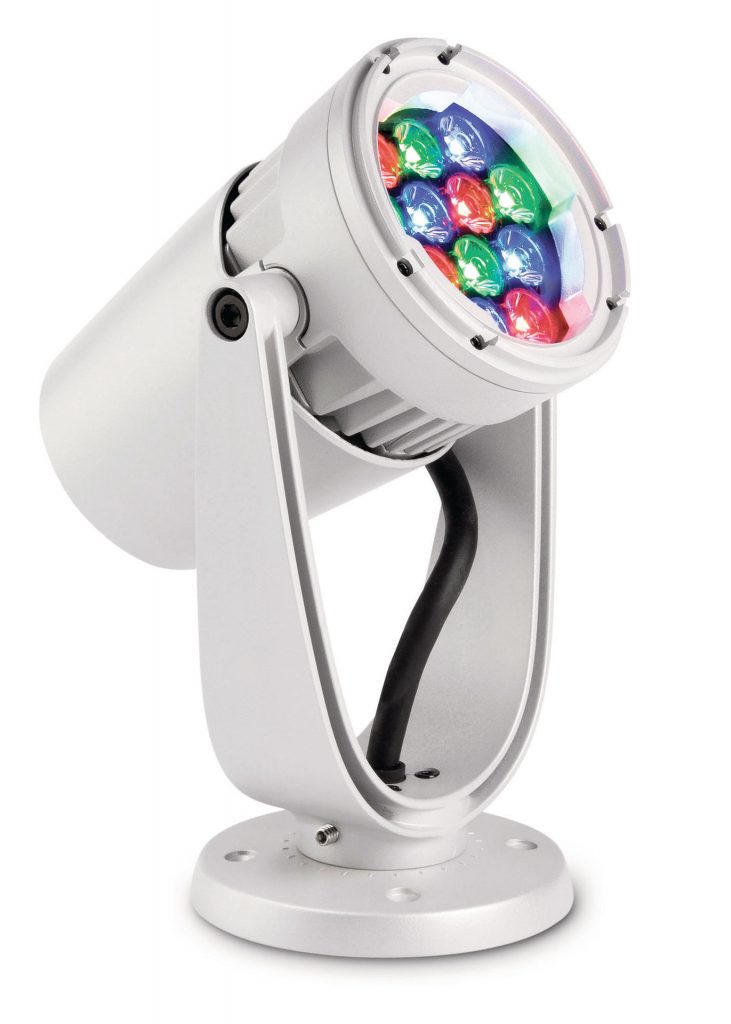
3.Rated working voltage
The rated working voltage of the lamp is the electrical parameter index of the lamp, which directly determines the use environment of the lamp, that is, the actual working voltage must be consistent with the rated working voltage. Otherwise, either the light source will be burned out due to the high voltage, or the lighting effect will not be achieved due to the low voltage.
4.The choice of underwater lights
According to the actual application requirements of the project, how to choose the water colored lights reasonably should be considered from the following aspects.
1), safety function In landscape places, the choice of underwater colored lights takes personal safety as the first element. It must be in accordance with the requirements of the national standard to use underwater colored lights with a safety voltage of 12V.
2), lighting function The lighting function mainly refers to the brightness of the light source. It can choose underwater colored lights with different powers according to the illumination height and projection area. Another element of the lighting function is the color of the underwater colored lights, which are generally red, yellow, green, blue, and white, which can be selected according to the application occasion, the illuminated object and the atmosphere created
3) Appearance and shell material Although underwater lanterns are used underwater, they are not very conspicuous. But the appearance and material are related to the specific gravity of the lamp. If the specific gravity is too small, greater buoyancy will be produced, which will easily loosen the fixing screws of the underwater lantern, which will cause the lamp to float on the surface of the water. At the same time, due to long-term use in water, the shell material should have a certain anti-corrosion function, and the surface paint should be firm. 4) Economical The economy of underwater colored lights refers to the sum of the one-time investment and operating costs of the lamps. Generally speaking, better quality underwater lights have higher prices, longer service life and lower operating costs. On the contrary, lower quality underwater lights are cheap, but they are often caused by water leakage and electricity leakage. Blindness not only increases operating costs, some even affect the acceptance of the entire project.

